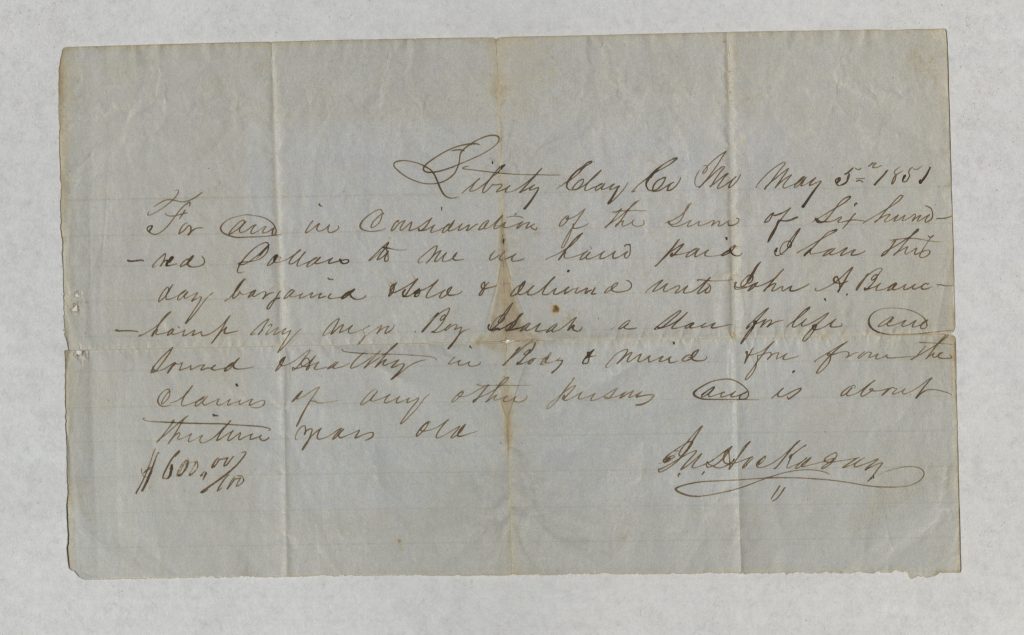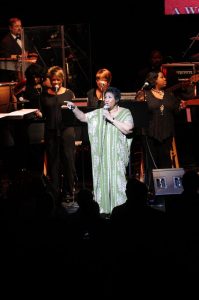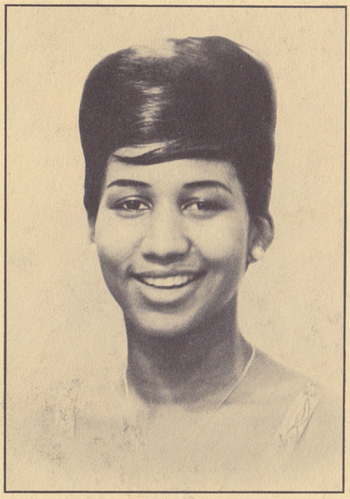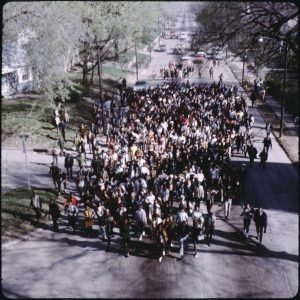On May 26, 1934, a brand new train covered 1,015 miles from Denver to Chicago in 13 hours and 5 minutes, setting records for speed and time. A fine specimen of art deco styling, rendered in gleaming stainless steel, it was the first of a generation of revolutionary new streamlined trains built for the Chicago, Burlington and Quincy railroad. These trains were known as “Zephyrs,” after Zephyrus, the Greek god of the West Wind. For the next three decades, Zephyrs from Chicago and Kansas City crisscrossed the western US. Their service spanned a time of transition in American transportation; it began in the depths of the Depression and ended with the expansion of air travel and interstates during the 1960s.
John E. Lynn was a General Passenger Agent for the Chicago, Burlington and Quincy Railroad (CB&Q) office located in Kansas City during the era of the Zephyr trains. The J.E. Lynn collection in LaBudde Special Collections contains many of the Zephyr-related items Lynn collected during his life. This post showcases some of those items, and explains how the Zephyr trains represent one of the high water marks of American railroading during the 20th century.
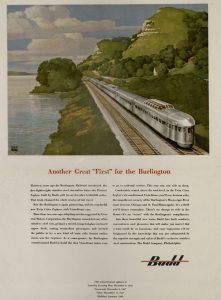 Zephyrs were built by the Budd Manufacturing Company of Philadelphia, PA. They utilized a unibody design that reduced the number of components in the drive system and saved weight. Stainless steel sheetmetal as thin as 0.012 inch was formed into boxes and rectangles to create a strong skeleton that was lighter than traditional components like wooden braces or thick steel bars and plates. The roof was made of stainless steel just 0.022 inches thick, corrugated to give it rigidity. As a result, three of Budd’s “Zephyr” cars weighed the same as one contemporary Pullman coach car. The Pioneer Zephyr was powered by General Motors’ latest diesel-electric powerplant: a 660 horsepower diesel engine that drove an electric generator. GM upgraded later engines to produce about 1000 horsepower. Architect John Harbeson designed the train’s exterior to be both beautiful and functional. Stainless steel meant paint was unnecessary, and besides, who would want to hide that shine? Wind tunnel testing at MIT revealed the Zephyr had over 40% less drag compared to older designs. CB&Q hired the head of the University of Pennsylvania’s architecture department to design the ultra-modern interiors. Each compartment had heating and air conditioning – good luck finding that in a 1930s car or plane. All the innovation by Budd, GM, and CB&Q resulted in new flagship trains that were thoroughly modern in appearance and function.
Zephyrs were built by the Budd Manufacturing Company of Philadelphia, PA. They utilized a unibody design that reduced the number of components in the drive system and saved weight. Stainless steel sheetmetal as thin as 0.012 inch was formed into boxes and rectangles to create a strong skeleton that was lighter than traditional components like wooden braces or thick steel bars and plates. The roof was made of stainless steel just 0.022 inches thick, corrugated to give it rigidity. As a result, three of Budd’s “Zephyr” cars weighed the same as one contemporary Pullman coach car. The Pioneer Zephyr was powered by General Motors’ latest diesel-electric powerplant: a 660 horsepower diesel engine that drove an electric generator. GM upgraded later engines to produce about 1000 horsepower. Architect John Harbeson designed the train’s exterior to be both beautiful and functional. Stainless steel meant paint was unnecessary, and besides, who would want to hide that shine? Wind tunnel testing at MIT revealed the Zephyr had over 40% less drag compared to older designs. CB&Q hired the head of the University of Pennsylvania’s architecture department to design the ultra-modern interiors. Each compartment had heating and air conditioning – good luck finding that in a 1930s car or plane. All the innovation by Budd, GM, and CB&Q resulted in new flagship trains that were thoroughly modern in appearance and function.
From 1934 until about 1960, the Zephyrs were the way to travel in comfort, speed, safety and style. They were the 1940s equivalent of flying first class. Other railroads imitated the CB&Q’s design, but the Zephyrs in particular became cultural icons, like jetliners and cars would in later years. The film Silver Streak (1934) was inspired by the train’s inaugural speed run. The film told the story of a heroic train designer whose revolutionary design helped stop a polio epidemic at a dam construction site by bringing iron lungs from Chicago to Denver (the same route, but opposite direction of the real-life run). In 1949 Hank Williams released the song “California Zephyr” as a tribute to the train of the same name.
Several Zephyrs offered service to Kansas City. After its speed run, the first train was renamed the Pioneer Zephyr and entered regular service between Omaha and Kansas City. In 1939 The General Pershing Zephyr (the ninth one built by Budd for CB&Q) began offering service between Kansas City and St. Louis. From 1953 to 1968, two Zephyr routes ran between Chicago and Kansas City. The daytime route was known as the Kansas City Zephyr while the nighttime route was called the American Royal Zephyr. The average journey time between Kansas City and Chicago was just under nine hours, with no need to stop for dinner.
Historical hindsight shows us that Zephyrs were a finale of the golden age of American railroads. Even though ridership never regained its 1910s-1920s peak, Zephyrs were a shining technological and cultural triumph that emerged during the darkness of the Depression. They were the pinnacle of railroad engineering: faster, more comfortable, and more efficient than any train before them. They were also superior to cars and planes in key ways. Finally, they were a “halo technology” – they did not carry most of the people most of the time, but they did it faster and with more style than anything else on wheels. Zephyrs symbolized convenience, glamor, freedom, excitement, and modernity, all wrapped in brilliant stainless steel.
Sources
J.E. Lynn Railroad Memorabilia Collection, MS32. LaBudde Special Collections, University of Missouri, Kansas City
Harold Cobb, “The Burlington Zephyr Stainless Steel Train.” Advanced Materials and Processes, 2009: 24-28.
Steve Glischinski, “Zephyrs and Diesels.” Encyclopedia of North American Railroads, edited by William D. Middleton, George Smerk, and Roberta L. Diehl, 221-222. Bloomington: Indiana University Press, 2007.

